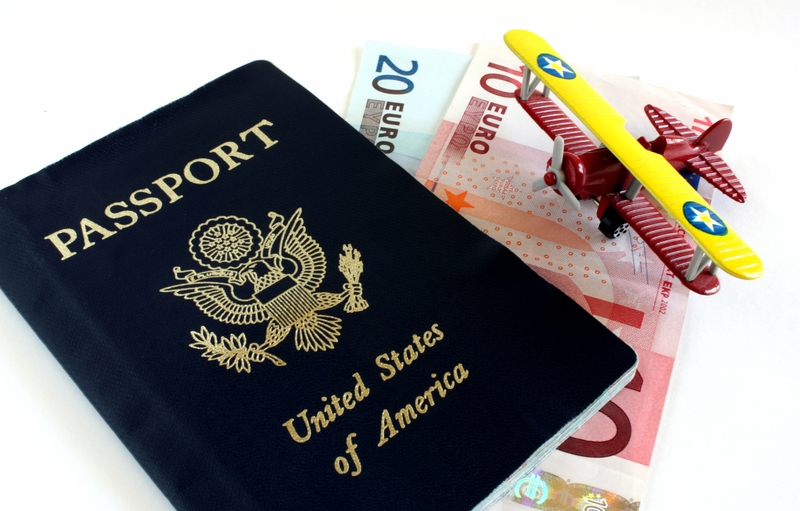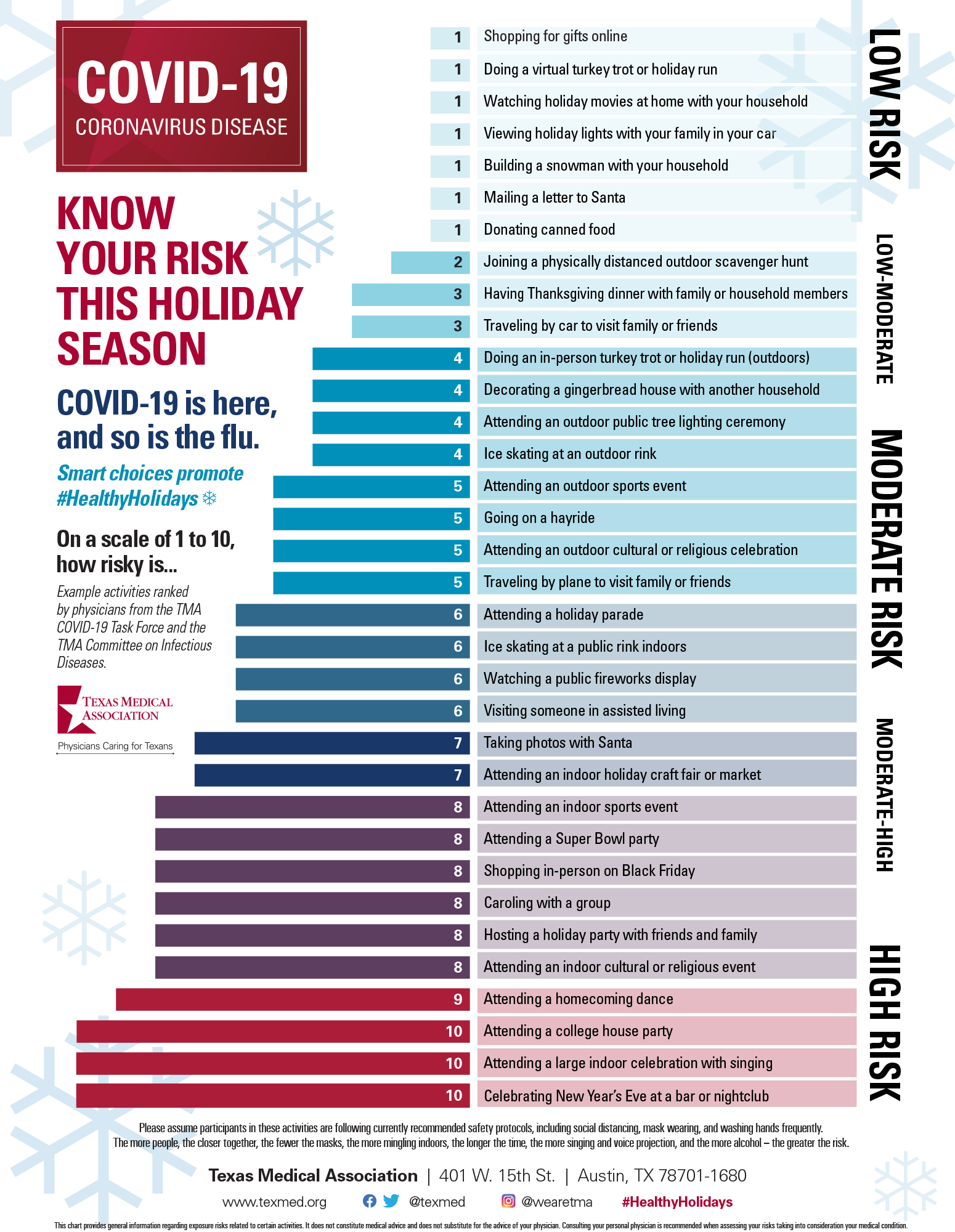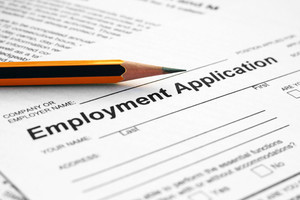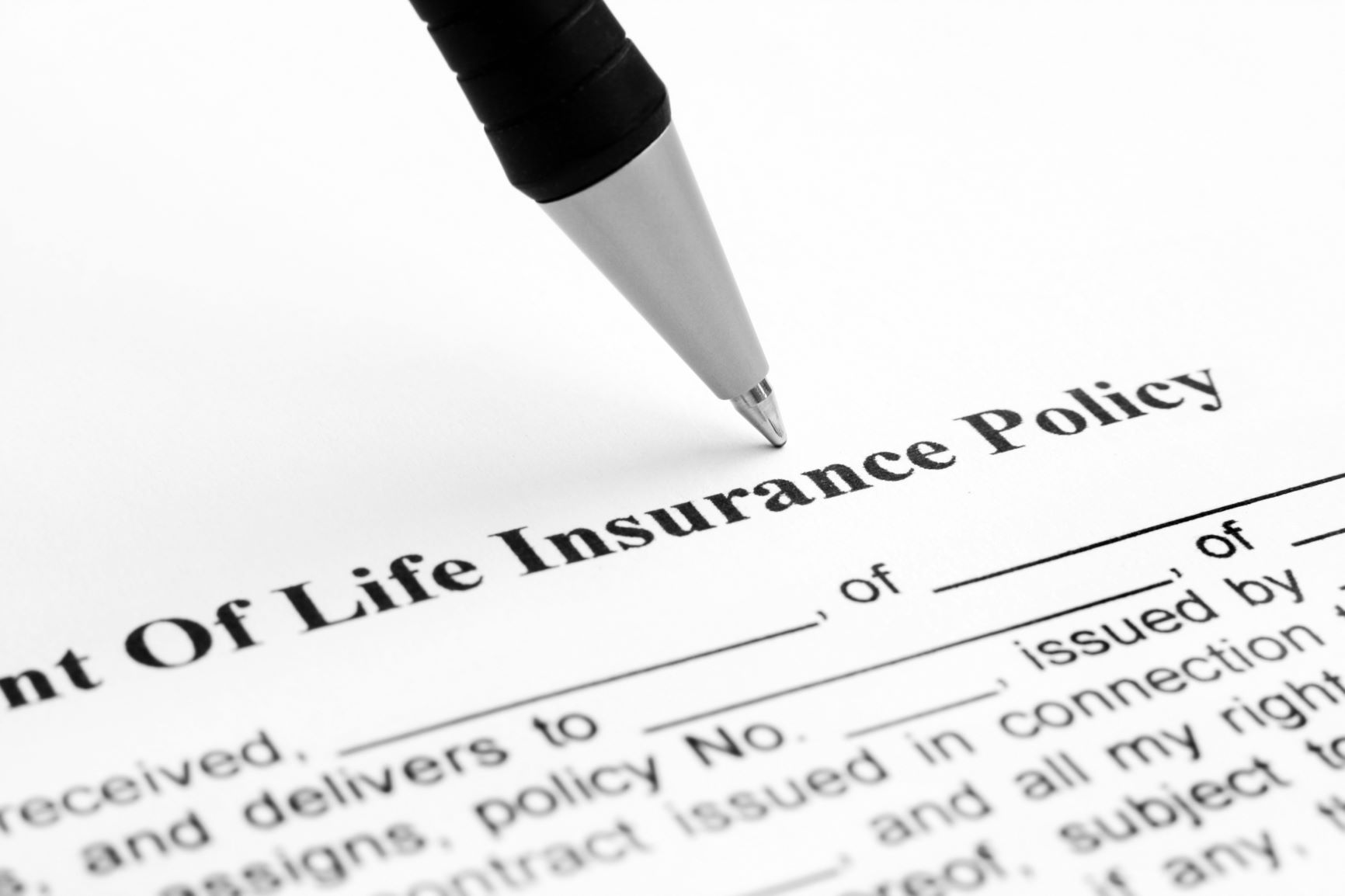Category: News
Get Ready to File Your Taxes
January 14, 2022

Although April 15 is traditionally the Internal Revenue Services’ (IRS) tax deadline day, in 2022 you’ll have until Monday, April 18, to file your taxes for 2021. April 18 also will be the deadline to request an automatic extension for an extra six months to file a return although the payment of taxes remains the same.
The IRS encourages taxpayers to get informed about topics related to filing their federal tax returns in 2022. These topics include special steps related to charitable contributions, economic impact payments, and advance child tax credit payments. Taxpayers can visit IRS.gov/getready for online tools, publications, and other helpful resources for the filing season.
Collect year-end income documents
Gather all your year-end documents before you start preparing your 2021 tax return and have on hand:
- Social Security numbers (SSNs) of everyone listed on your tax return. You may have these numbers memorized but double-checking that the SSNs on your tax return are accurate will avoid processing delays.
- Bank account and routing numbers. You’ll need these for direct deposit refunds. Direct deposit is the fastest way for you to get your money and avoids a check getting lost, stolen, or returned to IRS as undeliverable.
- Forms W-2 from employer(s).
- Forms 1099 from banks, issuing agencies, and other payers including unemployment compensation, dividends, distributions from a pension, annuity, or retirement plan.
- Forms 1099-K, 1099-MISC, W-2, or other income statements if you are a worker in the gig economy.
- Form 1099-INT for interest received.
- Other income documents and records of virtual currency transactions.
- Form 1095-A, Health Insurance Marketplace Statement. You will need this form to reconcile advance payments or claim the premium tax credit.
- Letter 6419, 2021 Total Advance Child Tax Credit Payments, to reconcile your advance child tax credit payments.
- Letter 6475, Your 2021 Economic Impact Payment, to determine your eligibility to claim the Recovery Rebate Credit.
You’ll receive forms by mail or via access online from employers and financial institutions in January. You should carefully review the forms for the income you received in 2021. If any information shown on the forms is inaccurate, you should contact the payer immediately for a correction.
Here are some key items for you to know before you file this year:
Notice changes to the charitable contribution deduction
Taxpayers who don’t itemize deductions may qualify to take a deduction of up to $600 for married taxpayers filing joint returns and up to $300 for all other filers for cash contributions made in 2021 to qualifying organizations.
Check on advance child tax credit payments
Families who received advance payments will need to compare the advance child tax credit payments that they received in 2021 with the amount of the child tax credit that they can properly claim on their 2021 tax return.
- Taxpayers who received less than the amount for which they’re eligible will claim a credit for the remaining amount of child tax credit on their 2021 tax return.
- Eligible families who did not get monthly advance payments in 2021 can still get a lump-sum payment by claiming the child tax credit when they file a 2021 federal income tax return next year. This includes families who don’t normally need to file a return.
Early this year, the IRS will send Letter 6419 with the total amount of advance child tax credit payments taxpayers received in 2021. You should keep this and any other IRS letters about advance child tax credit payments with your tax records. You can also create or log in to IRS.gov online account to securely access your child tax credit payment amounts.
Claim the recovery rebate credit for economic impact payments
If you didn’t qualify for the third economic impact payment or did not receive the full amount, you may be eligible for the recovery rebate credit based on your 2021 tax information. You’ll need to file a 2021 tax return to claim the credit.
You’ll need the amount of your third economic impact payment and any plus-up payments received to calculate your correct 2021 recovery rebate credit amount when you file your tax return.
The IRS also will send early this year Letter 6475 that contains the total amount of the third economic impact payment and any plus-up payments received. You should keep this and any other IRS letters about your stimulus payments with other tax records. You also can create or log in to IRS.gov online account to securely access your economic impact payment amounts.
Report unemployment compensation received
In 2021, many people received unemployment compensation that is taxable and must be reported on their income tax returns. If you received unemployment benefits, you should receive Form 1099-G, Government Payments, from your state unemployment insurance agency in January either by mail or electronically. Check your state’s unemployment compensation website for more information. Form 1099-G reports the amount of unemployment compensation received in Box 1 and any federal income tax withheld in Box 4. Be sure to include these amounts on your 2021 federal tax return. Find more information on unemployment benefits in Publication 525.
Choose a reputable tax return preparer
As you get ready to file your 2021 tax return, you may be considering hiring a tax return preparer. The IRS reminds taxpayers to choose a tax return preparer wisely. This is important because you are responsible for all the information on your return, no matter who prepares it for you.
There are different kinds of tax preparers, and your needs will help determine which kind of preparer is best for you. With that in mind, here are some quick tips from the IRS to help you choose a preparer.
- Check the IRS Directory of Preparers. While it is not a complete listing of tax return preparers, it does include those who are enrolled agents, CPAs, and attorneys, as well as those who participate in the Annual Filing Season Program.
- Check the preparer’s history with the Better Business Bureau. Taxpayers can verify an enrolled agent’s status on IRS.gov.
- Ask about fees. Taxpayers should avoid tax return preparers who base their fees on a percentage of the refund or who offer to deposit all or part of their refund into their financial accounts.
- Be wary of tax return preparers who claim they can get larger refunds than others.
- Ask if they plan to use e-file.
- Make sure the preparer is available. People should consider whether the individual or firm will be around for months or years after filing the return. Taxpayers should do this because they might need the preparer to answer questions about the preparation of the tax return.
- Ensure the preparer signs and includes their preparer tax identification number (PTIN). Paid tax return preparers must have a PTIN to prepare tax returns.
- Check the person’s credentials. Only attorneys, CPAs, and enrolled agents can represent taxpayers before the IRS in tax matters. Other tax return preparers who participate in the IRS Annual Filing Season Program have limited practice rights to represent taxpayers during audits of returns they prepared.
Review Publication 5349: “Year-Round Tax Planning is for Everyone”
Life changes can affect your expected refunds or the amount of tax you owe. These changes include things such as employment status, marital status, and financial gains or losses. Publication 5349 provides tips on developing habits throughout the year that will help make tax preparation easier.
InsureYouKnow.org
When you file your 2021 tax return, keep a record of the forms you submit to the IRS at insureyouknow.org. Get a jump on your 2022 tax return by organizing your tax records, including Forms W-2 and W-9 from employers, Forms 1099 from banks and other payers, other income documents, and records of virtual currency transactions. Keep track of your tax records as you receive them at insureyouknow.org. Having records organized makes preparing a tax return easier. It may also help you discover potentially overlooked deductions or credits.
Processing Passports
October 15, 2021

If you’re ready to start planning an international trip that you’ve postponed during the COVID-19 pandemic, first on your checklist should be to find your passport and see when it expires. Or, if you’ve never applied for a passport, cool your jets because your journey may be delayed due to current slow processing times for passport services.
The COVID-19 pandemic caused myriad service disruptions and delays, and while most services are relatively back to normal, obtaining a passport remains lengthier than it was prior to the pandemic. Passport adjudicators, who are essential to processing passports, can’t work from home; they must work within federal offices to process passports since passports are intended to be among the most secure documents a citizen will carry.
Officials recommend applying for a passport at least six months ahead of planned travel to avoid last minute complications. Individuals who do not have plans to travel abroad but have a passport that will expire within a year, are encouraged to apply now by mail or at an acceptance facility, such as a post office or library.
Effective October 8, routine service can take up to 14 weeks for new passports and passport renewals from the day an application is submitted to the day a new passport is received according to the State Department website. Information on passport fees can be found online here. Expedited service (for an additional $60) can take up to 10 weeks from the day an application is submitted to the day a new passport is received. These door-to-door timeframes include both processing and mailing times.
Here are a few suggestions from the State Department:
Select trackable mail
Send your application via USPS Priority Mail Express and pay an extra $17.56 for 1-2 day delivery of your completed passport. These services provide the fastest turnaround and protect your important documents.
Use self-service tools online
Get your questions answered immediately by using one of the available online self-service tools. Check online for your passport status. Customer service representatives will not give status updates over the phone.
Apply early
Apply at least 4-6 months before your planned travel. Due to limited availability for urgent travel appointments, you can’t be guaranteed to receive in-person service at a passport agency or center. Customers with life-or-death emergencies are prioritized. You won’t be charged a fee to make an appointment. Visit the Passport Agency and Center page to learn more.
Schedule a limited appointment by phone
Call 1-877-487-2778 or 1-888-874-7793 TDD/TTY from 8 a.m. to 10 p.m. ET, Mondays through Fridays. The appointment line is closed on weekends and federal holidays. The online appointment booking system has been temporarily disabled to ensure that very limited appointments go to applicants who need them for urgent travel. Learn more to see if you qualify for an appointment.
Renew by mail
Adults with 10-year passports can renew them by mail instead of appearing in person.
Respond to request for more information
If you applied more than 14 weeks ago for routine service or 10 weeks for expedited service and have not received your passport, the State Department may have sent you a letter requesting more information and can’t continue processing your application until you respond to this letter. Learn more on the Respond to a Letter or Email page.
If you’re applying for a first-time passport
Children under age 16, first-time applicants and applicants who had their passports lost or stolen must apply in person and cannot renew by mail. But due to staffing shortages and other COVID-19-related issues, it can be tough to get an appointment at a local acceptance facility, which is typically a post office, library, or city clerk’s office.
Appointments are required at some, but not all, locations. Once you’ve applied at an acceptance facility, expect those same lengthy processing times that the renewal folks will experience as well.
Make time to gather your application materials, which includes evidence of U.S. citizenship for new passports. If you need time to track down your birth certificate or need to request one from an authorized issuing agency, your international trip may be even further than 18 weeks out.
Allow at least six months’ validity remaining
A valid passport that’s set to expire soon might be insufficient to assure international travel. Some countries require passports to be valid at least six months beyond your trip dates. So, even if your passport doesn’t expire until 2022, your 2021 holiday travel plans may be in jeopardy if your passport expires within six months of your trip. Some airlines won’t even let you board with a passport set to expire within that window. See which countries have such requirements via the State Department’s Country Information page.
Download passport forms
If you need to renew your passport or apply for one for the first time, you can download forms on the State Department website.
InsureYouKnow.org
At insureyouknow.org, you can keep track of your passport application or renewal journey. Here, you also can file copies of your valid passport, driver’s license, and birth certificate for safekeeping in case you lose them or need to refer to them while traveling.
Home for the Holidays
December 17, 2020

As 2020 comes to a close, memories of past holiday gatherings with family and friends may increase the stressful and isolating feelings you have experienced during the COVID-19 pandemic. Holiday celebrations will be different this year to prevent the spread of COVID-19.
Texas Medical Association has compiled a Know Your Risk This Holiday Season chart to provide a list of high-risk activities to avoid and fun alternatives to adapt that pose lower risk of spreading COVID-19. The chart ranks 34 holiday activities from least to most risky so holiday revelers can make informed choices during the busiest travel and social-gathering season of the year. Among the least risky items on the chart are shopping for gifts online, watching holiday movies at home, or viewing holiday lights with your family in your car. The riskiest activities include attending a large indoor celebration with singing, attending a college house party, and celebrating New Year’s Eve at a bar or nightclub.
The Centers for Disease Control and Prevention (CDC) reports that the best way to stay safe and protect others this holiday season is to stay home and celebrate with people with whom you live. Getting together with family and friends who do not live with you can increase the chances of getting or spreading COVID-19 or the flu.
Travel Plans up in the Air
Travel is highly discouraged because it may increase your chance of getting and spreading COVID-19. Consider postponing travel and staying home to protect yourself and others this year.
If you are considering traveling, the CDC recommends asking yourself the following questions before you make your travel plans.
- Are you, someone in your household, or someone you will be visiting at increased risk for getting very sick from COVID-19?
- Are cases high or increasing in your community or your destination? Check CDC’s COVID Data Tracker for the latest number of cases.
- Are hospitals in your community or your destination overwhelmed with patients who have COVID-19? To find out, check state and local public health department websites.
- Does your home or destination have requirements or restrictions for travelers? Check state and local requirements before you travel.
- During the 14 days before your travel, have you or those you are visiting had close contact with people they don’t live with?
- Do your plans include traveling by bus, train, or air which might make staying 6 feet apart difficult?
- Are you traveling with people who don’t live with you?
If the answer to any of these questions is “yes,” you should consider making other plans, such as hosting a virtual gathering or delaying your travel.
The safest thing to do is to stay home, but if you do decide to travel, testing can make travel safer but it does not eliminate all risk.
Safety Measures from Home and Back
If you decide to travel, get a flu vaccine prior to traveling and follow these safety measures during your trip to protect yourself and others from COVID-19:
- Wear a mask in public settings—on public and mass transportation, at events and gatherings, and anywhere you will be around people outside of your household.
- Avoid close contact by staying at least 6 feet apart from anyone who is not from your household.
- Wash your hands often with soap and water for at least 20 seconds or use hand sanitizer that contains at least 60 percent alcohol.
- Avoid contact with anyone who is sick.
- Avoid touching your face mask, eyes, nose, and mouth.
According to the CDC, for those who decide to travel, COVID-19 tests should be considered one to three days before the trip and again three to five days afterward. The agency also recommends travelers reduce non-essential activities for a full week after they return or for 10 days if not tested afterward.
Based on extensive modeling, the CDC has revised quarantine guidance and now recommends that people who have been in contact with someone infected with the virus can resume normal activity after 10 days, or seven days if they receive a negative test result. That’s down from the 14-day period recommended since the pandemic began.
At InsureYouKnow.org, you can keep track of travel insurance, medical records, including any COVID-19 testing and results as well as vaccines for the flu and COVID-19, when it becomes available. Social gatherings next winter are predicted to be more enjoyable and fraught with less fear of contracting and spreading a coronavirus. You’ll also have more opportunities to travel and to reconnect with family and friends after a COVID-19 vaccine has been disseminated worldwide.
On the Road Again . . . Returning to Your Workplace
October 14, 2020

If you’ve been working from home during the COVID-19 pandemic, you may look forward to rejoining your colleagues in the offices deserted by your company earlier this year when you started working from home. According to a survey conducted by The Conference Board, about 35 percent of U.S. companies don’t know when they will allow employees back into the office. The survey also concluded that about 39 percent of companies plan to reopen offices by early 2021, while 13 percent of offices have remained open throughout the pandemic.
While decisions to reopen are being made by individual companies that see benefits of staff working collaboratively and creatively in person that many workers miss, and worry that continued lockdowns could damage the economy and society, the return to the office isn’t without risk when the number of coronavirus cases continues to climb.
Returning to the office will be a big change for millions of employees who have gotten used to working from home without long commutes and a daily separation from family during strictly structured work hours. Companies need to prepare for reopening offices even if they don’t plan to call workers back until 2021. Every organization is going to be different in the response needed to get offices back open, depending upon who owns the building, office size, and whether employees are likely to use public transportation.
Office building employers, owners and managers, and operations specialists may find useful guidelines from the Centers for Disease Control and Prevention (CDC) to prepare for the time when employees return to work by creating a safe and healthy workplace for workers and clients. The following list is an abbreviated version of the CDC’s recommendations to protect your staff and others while slowing the spread of COVID-19.
Check the building to see if it’s ready for occupancy.
- Evaluate the building and its mechanical and life safety systems to determine if the building is ready for occupancy.
- Ensure that ventilation systems in your facility operate properly.
- Increase circulation of outdoor air by opening windows and doors if possible, and using fans.
- To minimize the risk of waterborne diseases, take steps to ensure that all water systems and features and water-using devices are safe to use after a prolonged facility shutdown.
Identify how workers might be exposed to COVID-19 at work.
- Conduct a thorough hazard assessment of the workplace to identify potential workplace hazards that could increase risks for COVID-19 transmission.
- Identify work and common areas where employees could have close contact (within 6 feet) with others—for example, meeting rooms, break rooms, the cafeteria, locker rooms, check-in areas, waiting areas, and routes of entry and exit.
- Include all employees in communication plans—for example, management staff, utility employees, relief employees, and janitorial and maintenance staff.
- If contractors are employed in the workplace, develop plans to communicate with contracting companies about changes to work processes and requirements for the contractors to prevent transmission of COVID-19 in your facility.
Develop hazard controls to reduce transmission among workers.
- Modify or adjust seats, furniture, and workstations to maintain social distancing of 6 feet between employees.
- Install transparent shields or other physical barriers to separate employees and visitors where social distancing is not an option.
- Arrange chairs in reception or other communal seating areas by turning, draping, spacing, or removing chairs to maintain social distancing.
- Use methods to physically separate employees in all areas of the building, including work areas and other areas such as meeting rooms, break rooms, parking lots, entrance and exit areas, and locker rooms.
- Replace high-touch communal items, such as coffee pots and bulk snacks, with alternatives such as pre-packaged, single-serving items. Encourage staff to bring their own water to minimize use and touching of water fountains or consider installing no-touch activation water fountains.
- Consider taking steps to improve ventilation in the building, in consultation with an HVAC professional, based on local environmental conditions and ongoing community transmission in the area.
- Ensure exhaust fans in restroom facilities are functional and operating at full capacity when the building is occupied.
Change the way people work.
Employees who have symptoms of COVID-19 or who have a sick family member at home with COVID-19, should be encouraged to notify their supervisor, stay home, and follow CDC-recommended steps. Employees should not return to work until they meet the criteria to discontinue home isolation, in consultation with their healthcare provider. At the office, the employer needs to:
- Perform enhanced cleaning and disinfection after anyone suspected or confirmed to have COVID-19 has been in the workplace.
- Consider conducting daily in-person or virtual health checks of employees before they enter the work site.
- Stagger shifts, start times, and break times to reduce the number of employees in common areas such as screening areas, break rooms, and locker rooms.
- Follow the CDC’s guidance for cleaning and disinfecting to develop, follow, and maintain a plan to perform regular cleanings of surfaces.
- Give employees enough time to wash their hands and access to soap, clean water, and paper towels.
- Discourage handshaking, hugs, and fist bumps.
- Encourage the use of outdoor seating areas and social distancing for any small-group activities such as lunches, breaks, and meetings.
- Use no-touch trash cans.
- Remind employees and clients to wear cloth face coverings in public settings and avoid touching their eyes, noses, and mouths.
The magazine Financial Management encourages employers to find a balance when planning to reopen the office and offers some key considerations, including the following ones, to keep in mind when considering reopening the office.
Allow choices and review policies.
Employers must be aware that some employees or someone they live with will have health conditions which make them particularly vulnerable to the coronavirus, meaning a return to the office remains unlikely for many months.
Organizations also may find that some employees have discovered that they enjoy working from home and don’t want to come back into the office. The optimal situation is likely to be to give employees the choice of coming into the office or continuing to work from home. Coaxing any staff working from home to return to the office may prove a challenge, but for high-risk employees, those with vulnerable family members, or ones with children doing remote learning, going back to the workplace simply is not an option at present.
Support employees who work at home.
Companies need to ensure that staff have the right technology and resources to continue working from home. More firms are now more likely to consider flexible working requests than before the pandemic struck.
Policies covering sick leave, health benefits, and paid time off also will need to be reviewed so that they adequately protect staff who contract COVID-19 or are required to self-isolate.
Plan for possible outbreaks.
Companies already have plans in place to evacuate offices in case of fires, earthquakes, or other disasters but now they need to add health emergencies to the list. If an employee develops COVID-19 symptoms in the workplace, know how to get them safely out of the building. Companies may need to close a floor or an entire building, before deep-cleaning it, track and trace all staff in contact with the employee, and cover the costs for COVID-19 tests and resulting treatment if an employee tests positive.
With so many changes envisioned for your return to work, at InsureYouKnow.org, you can keep track of modifications in company policies for your health care coverage and paid time off, technology purchases for which you may be reimbursed by your company, and records of COVID-19 testing that may be requested by your employer or when you travel.
You Are Not Alone
September 28, 2020

Take time out on October 10, designated as World Mental Health Day, to become aware of mental health issues around the world and in your own surroundings, especially in the time of the COVID-19 pandemic. Mental health is one of the most neglected areas of public health. Close to 1 billion people are living with a mental disorder, 3 million people die every year from the harmful use of alcohol, and one person dies every 40 seconds by suicide.
As the world’s population has witnessed from afar and has experienced close-up since earlier this year, the COVID-19 pandemic has been a stressful time for many people. Though necessary to prevent illness and loss of life due to COVID-19, public health recommendations, such as social distancing, business and school closures, shelter-in-place orders, and wearing face coverings in public, have made people feel isolated, lonely, and financially distressed. Fear and anxiety about the rapidly spreading coronavirus have caused strong emotions in adults, teenagers, and children. Finding healthy ways to cope with the stress you are experiencing may help you, the people you care about, and your community become stronger.
Everyone reacts differently to stressful situations. How you respond to stress during the COVID-19 pandemic can depend on your background, your social support from family or friends, your financial situation, your health and emotional background, the community you live in, and many other factors. Stress during the COVID-19 pandemic can cause the following:
- Fear and worry about your own health and the health of your loved ones, your financial situation or job, or loss of support services you rely on.
- Changes in sleep or eating patterns.
- Difficulty sleeping or concentrating.
- Worsening of chronic health problems.
- Worsening of mental health conditions.
- New or increased use of tobacco and alcohol and other substances.
You are not alone if you are experiencing any of these reactions to stress during the COVID-19 pandemic. Symptoms of stress did not originate with the current pandemic; John Cassian, a monk and theologian who wrote in the early 5th century, referred to the emotion of what we are collectively feeling today as “acedia.” A strange combination of listlessness, undirected anxiety, and inability to concentrate make up the paradoxical emotion of acedia. In reaction to physical and social isolation, the symptoms of acedia are the seizing up or freezing of feelings, reactions that were fairly common among medieval monks shut away in monasteries.
You may feel like you are living in a monastery because your way of life has changed drastically and consequently your emotional health may be challenged. You need to take care of your mental health, an important part of your overall health and wellbeing, that affects how you think, feel, and act. It may also affect how you handle stress, relate to others, and make choices during an emergency. People with pre-existing mental health conditions or substance use disorders may be particularly vulnerable in an emergency. Mental health conditions such as depression, anxiety, bipolar disorder, or schizophrenia affect a person’s thinking, feeling, mood, or behavior in a way that influences their ability to relate to others and function each day. These conditions may be situational or long-lasting. People with preexisting mental health conditions should continue with their treatment and contact their health care providers if new or worsening symptoms develop.
The new realities of working from home, temporary unemployment, home-schooling of children, and lack of physical contact with other family members, friends and colleagues may be taking a toll on your mental health. Adapting to lifestyle changes such as these, and managing the fear of contracting the virus and worrying about people close to you who are particularly vulnerable, are challenging for everyone. They can be particularly difficult for people with mental health conditions.
Fortunately, there are lots of things that we can do to look after our own mental health and to help others who may need some extra support and care.
Here are tips and advice that you may find useful.
- Keep informed. Listen to advice and recommendations from your national and local authorities. Follow trusted news channels, such as local and national TV and radio, and keep up-to-date with the latest news from reliable sources.
- Minimize newsfeeds. Try to reduce how much you watch, read or listen to news that makes you feel anxious or distressed. Seek the latest information at specific times of the day, once or twice a day if needed.
- Have a routine. Keep up with daily routines as far as possible, or make new ones. Get up and go to bed at similar times every day. Keep up with personal hygiene. Eat healthy meals at regular times. Exercise regularly. Allocate time for working and time for resting.
- Make time to do things you enjoy. Pursue a favorite hobby or start a new one. Engage in exercising, collecting items, gardening, reading, writing, cooking, baking, drawing and painting, sewing, knitting, crocheting, or doing other forms of arts and crafts.
- Keep in contact with others. Regular contact—by phone, email, text, live chat, or old-fashioned letter and note writing—is important for you and other people you care about to feel less isolated and more appreciated.
- Limit alcohol and drug use. Limit the amount of alcohol you drink or don’t drink alcohol at all. Don’t start drinking alcohol if you have not drunk alcohol before. Avoid using alcohol and drugs as ways of dealing with fear, anxiety, boredom, and social isolation.
- Be mindful of screen time. Be aware of how much time you spend in front of a screen every day. Make sure that you take regular breaks from on-screen activities.
- Balance video games with off-line activities. While video games can be a way to relax, it can be tempting to spend much more time on them than usual when at home for long periods. Be sure to keep the right balance with off-line activities in your daily routine.
- Keep a positive social media presence. Use your social media accounts to promote positive and hopeful stories.
The COVID-19 pandemic and resulting economic downturn have negatively affected many people’s mental health and created new complications for people already suffering from mental illness and substance use disorders. Take time on World Mental Health Day, and every other day of the year, to create a positive perspective on dealing with your stress levels during the COVID-19 pandemic.
If you need to maintain prescriptions for your or family members’ health conditions, you can keep records at InsureYouKnow.org of prescribing physicians, the trade names and dosages of medicines, locations of pharmacies that fill your medications, the number of days supplied, and refill expiration dates.
Labor Day 2020: Tips for Americans Looking for Work
August 27, 2020

In 2020, Labor Day is celebrated on Monday, September 7. According to the U.S. Department of Labor, this holiday is a yearly national tribute to the contributions workers have made to the strength, prosperity, and well-being of the United States. The first Labor Day holiday was celebrated in 1882 in New York City. Three years later, the holiday had spread to other industrial centers of the country and began to represent the end of summer and the start of the back-to-school season. Although Labor Day is typically celebrated in cities and towns across the nation with parades, picnics, barbecues, fireworks displays, and other public gatherings, the manner and extent of America’s annual celebration to honor the American worker will be different this year during the COVID-19 pandemic.
A three-day holiday weekend this September may not signal a time to publicly celebrate for many Americans affected by high unemployment, shifting industry hiring patterns, and fundamental changes to the way they work and play amid the COVID-19 crisis. If you are unemployed, underemployed, or just ready for a change in your work circumstances, the following tips may increase your chances of finding a job under the current challenging labor market.
Review your resume and online professional presence. If it’s been a while since you’ve applied for a job, evaluate your resume to make sure it’s error-free, fully updated, and customized for each job for which you submit an application. Post your resume on your own website if you have one, and on online job boards or sites specific to your target industry. Consider adding work samples, links to any published work, or a video introduction to your resume. Use keywords that will yield results in search engine queries conducted by prospective employers. Keep your references informed about job leads and scheduled interviews so they will be ready to respond to requests for recommendations about your job performance and history.
Look in the right places for opportunities. Current hiring trends may include positions for freelancers and remote workers for which you may be eligible. You also should be willing to consider new industries where job opportunities have been stronger, such as technology and health care. Contact people in your network who are employed in favorable hiring industries and explain your interest and availability.
As companies move to remote work to fight the coronavirus pandemic and an increasing number of workers are being laid off or furloughed, you might be wondering if you should continue to send out resumes or just assume that no one is hiring for the foreseeable future. It’s true that economists are predicting a recession, but career experts advise to keep networking and applying, provided you change your approach to acknowledge these are uncertain times.
Join professional groups on Facebook and LinkedIn that offer a wide range of options with groups for a variety of professions. Make yourself visible to online groups by introducing topics or adding to conversations that allow you to demonstrate your expertise.
Figure out your strengths. Know your skills, your worth, and your passions – these are the things that help differentiate you, and allow you to thrive in the areas in which you’re most competitive. To address remote working conditions, emphasize your comfort and expertise with technology, including remote collaboration and communication programs you’ve used and endorse. A good job search is targeted in many ways, including knowing where you’ll be appreciated and in demand. Analyze job descriptions by listing each required skill and experience. Then consider whether you have that exact skill, if you have the skill but haven’t used it in a few years, or if you’re lacking the skill entirely. Apply that information to determine what you need to improve on to make yourself a better candidate when the job market picks up again.
Refresh your skills. Look into taking free or low-cost courses online or obtain certifications in a new skill that can complement your existing job path or lead to a new career. Due to the COVID-19 pandemic, many online learning options provide free or lower-priced educational programs and courses on professional development, leadership, and communication skills that allow you to continue working in another capacity while you complete your studies.
Check out free online course including MOOCs (Massive Open Online Courses), EdX classes with courses from MIT and Harvard, and free Microsoft training and tutorials. In addition to providing job announcements and company descriptions, TheMuse.com links to online courses “that’ll boost your skills and get you ahead.” Learn to use remote communication and collaboration programs like Slack, Zoom, Skype, the G-Suite, and Dropbox that can be learned and applied quickly.
Rely on others to help in your job search. In addition to a source for new jobs, your network also can be the best place to advertise your job skills and career ambitions, seek help securing loans or financing to start a new business, assistance in applying or being admitted to a new career training or degree program, or to obtain introductions to others who might be able to help in a job search. Check out your high school or university’s alumni network to learn where your connections are working. When you reach out, ask for a short informational interview to learn more about their workplace, and during the conversation, ask whether there’s anyone else you could speak with at the company. Repeat this process until you’ve spoken to someone in the department you think is the best fit.
During an economic slowdown, it’s important to focus on what you can control—by improving your skills and reaching out to your network, you can lay the groundwork now so that when the crisis is over you have opened doors and rekindled relationships.
Project yourself on Labor Day 2021. Pending the development and implementation of a coronavirus vaccine, the COVID-19 pandemic may be over within the next year. Analyze your need to overhaul your career or to take gig jobs or other freelance work if you’ve been laid off and are facing overwhelming debt and unemployment for an unforeseeable time. If possible, don’t make dramatic job changes or career decisions that can impact you for years to come. If you can determine where you want to be when COVID-19 is over, you can successfully direct your job search. Although companies might not be hiring in 2020, they will keep you in mind if you continue to build relationships and share your ideas with them until they do start hiring.
At InsureYouKnow.org, you can store your current and previous resumes, legal and contractual agreements pertaining to your employment, and work-related health insurance policies, especially if conditions and coverages have changed due to the COVID-19 pandemic.
Hold onto Your Hat (and Your Home)! It’s Hurricane Season!
August 14, 2020
The word hurricane comes from the Taino Native American word, hurucane, meaning evil spirit of the wind. An Atlantic hurricane or tropical storm is a tropical cyclone that forms in the Atlantic Ocean. In the Pacific Ocean, hurricanes are generally known as typhoons and in the Indian Ocean they are called tropical cyclones.
The National Oceanic and Atmospheric Administration (NOAA) warns that as many as 25 named storms—twice the average number—will occur in 2020 to present an extremely active season that began on June 1 and ends November 30 with more frequent, longer, and stronger storms in the Northern Atlantic Ocean.
Storms get names once they have sustained wind speeds of at least 74 miles per hour. NOAA anticipates that 2020 could deliver a total of 19 to 25 named storms. That would put this year in league with 2005, which experienced more than two dozen named storms including Hurricanes Katrina and Wilma. Each year, only 21 storm names are designated because the letters Q, U, X, Y, and Z are not used. The first hurricane of the year is given a name beginning with the letter “A.” The list of names selected for 2020 storms starts with “Arthur” and ends with “Wilfred.”
If all the allotted names are used, the National Hurricane Center will use the Greek alphabet for additional names. This has only happened one time on record—in 2005 when the Atlantic Ocean experienced 28 named storms.
“We are now entering the peak months of the Atlantic hurricane season, August through October,” National Weather Service Director Louis Uccellini said in a recent news teleconference. “Given the activity we have seen so far this season, coupled with the ongoing challenges that communities face in light of COVID-19, now is the time to organize your family plan and make necessary preparations.”
FEMA’s (Federal Emergency Management Agency) Ready website provides checklists to help you put a plan together, consider specific needs in your household, download and fill out a family emergency plan, and to practice your plan with your family/household.
In planning for hurricanes and in dealing with outcomes of storm damage, you’ll also need to review your insurance coverage to make sure it matches your needs. Hurricanes provide little advance notice of their arrival, and as landfall approaches, insurance companies may temporarily suspend new coverage and coverage changes.
An insurance representative can review your policy, explain limits and deductibles, and help you identify coverage gaps. “You should ask your representative for tips on hurricane risk mitigation that may lower your insurance premiums and better protect your property,” says Tom Woods, assistant vice president of property underwriting for USAA.
Insurance Information Institute (III) website shares precautionary measures you can take to protect your home as well as your business from destructive storms. Don’t wait until a hurricane watch is issued, because it may already be too late to take certain recommended precautions, including reviewing your insurance policies.
III also offers a hurricane season insurance checklist that can help you understand your coverage and whether it’s adequate to repair or rebuild your home and to replace your belongings. Keep in mind that your homeowners insurance covers the cost of temporary repairs for hurricane damage, as well as reasonable additional living expenses over and above your normal living expenses if you have to relocate.
However, your homeowners policy doesn’t cover flood damage, so you may want to consider looking into flood insurance. If you live by the coast, you may also need a separate policy for protection against wind and wind-blown water damage. Check for wind-damage exclusions, and if wind damage isn’t covered by your standard policy, buy one from your state’s insurance program. In hurricane-prone states, for instance Louisiana, Texas, and Florida, some standard home insurance policies won’t pay for windstorm damage. So, if you want coverage, you need to buy an extra windstorm insurance policy in addition to your normal home insurance policy. In this case all wind damage would fall under this policy instead of your traditional homeowners policy.
After reviewing and revising insurance coverage with your insurance professional for your home, car, and business, store your updated insurance policies at InsureYourKnow.org where they will be readily available if a hurricane comes calling and wreaks havoc on printed versions of policies kept in your home or office.
During hurricane season, visit FEMA’s Ready website for more information and stay tuned to the National Hurricane Center for updates on tropical storm and hurricane activity in the Atlantic Ocean.
Stand Up (or Sit Down) and be Counted in the 2020 Census
July 29, 2020

The 2020 Census counts every person living in the United States and five U.S. territories (Puerto Rico, American Samoa, the Commonwealth of the Northern Mariana Islands, Guam, and the U.S. Virgin Islands.) The count, mandated by the U.S. Constitution in Article 1, Section 2, is conducted by the U.S. Census Bureau, a nonpartisan government agency, every 10 years. The 2020 Census will mark the 24th time that the country has counted its population since 1790.
In March 2020, each home was sent an invitation to respond to a short questionnaire online, by phone, or by mail. If you have already replied by answering the survey about yourself and everyone who was living with you on April 1, 2020, the Census Bureau is grateful. If you haven’t yet completed the questionnaire, your answers are still needed to add with information from other homes to produce statistics, which never identify your home or any person in your home.
Census invitations included an insert in 12 non-English languages, inviting people to respond online or by phone in their language. These languages, ranked by the number of limited-English-speaking households according to American Community Survey data collected from 2012 to 2016, include Spanish, Chinese, Vietnamese, Korean, Russian, Arabic, Tagalog, Polish, French, Haitian Creole, Portuguese, and Japanese. About 13 million households received invitations in both English and Spanish.
The Census Bureau also is providing video guides narrated in 59 non-English languages (including American Sign Language) to help people respond online and print guides written in the 59 non-English languages to help people complete the English paper questionnaire. Guides are also available in Braille and large print English.
You’ve Got Questions? The U.S. Census Bureau has Answers
Why is the Census Conducted?
The census provides complete, accurate, and critical data that lawmakers, business owners, teachers, and many others use to provide daily services, products, and support for you and your community. Every year, billions of dollars in federal funding go to more than 100 programs, including hospitals, fire departments, schools, roads, and other resources, such as Medicaid, Head Start, block grants for community mental health services, and the Supplemental Nutrition Assistance Program, also known as SNAP, based on census data.
The results of the census also determine the number of seats each state will have in the U.S. House of Representatives, and they are used to adjust or redraw congressional and state legislative districts, based on where populations have increased or decreased.
State legislatures or independent bipartisan commissions are responsible for redrawing congressional districts. The U.S. Census Bureau provides states with population counts for this purpose.
Over the next decade, lawmakers, business owners, and many others will use 2020 Census data to make critical decisions. The results will show where communities need new schools, new clinics, new roads, and more services for families, older adults, and children.
Is My Personal Information Kept Confidential?
Yes, the Census Bureau is bound by federal law to protect your information, and your responses are used only for statistical purposes. The Census Bureau does not disclose any personal information.
Who is Required to Respond?
Everyone living in the United States and its five territories is required by law to be counted in the 2020 Census.
What Questions are on the Census?
Go to https://2020census.gov/en/about-questions.html for the list of questions and an explanation about each question posed. Please note, there is no citizenship question on the 2020 Census.
How do I Determine Place of Residence?
You should count yourself at the place where you are living and sleeping most of the time as of April 1, 2020 (Census Day). For some, this is straightforward. But others—including college students, service members, and people in health care facilities—may have questions about where they should count themselves or how they should respond. Other circumstances can cause confusion as well, such as moving, having multiple residences, having no permanent address, living in a shelter, or living at a hotel or RV park. You can find answers to these questions at Official Residence Criteria for the 2020 Census.
Whom Should I Count as Individuals Living with Me?
If you are filling out the census for your home, you should count everyone who was living there as of April 1, 2020. This includes anyone—related or unrelated to you—who lives and sleeps at your home most of the time.
Count roommates, young children, newborns, and anyone who is renting a space in your home. If someone was staying in your home on April 1 and had no usual home elsewhere, you should count them in your response to the 2020 Census.
If someone such as a college student is just living with you temporarily due to the COVID-19 situation, they should be counted where they ordinarily would have been living on April 1, 2020.
What can Happen if I Don’t Respond to the Census?
By census law, refusal to answer all or part of the census carries a $100 fine. The penalty goes up to $500 for giving false answers. In 1976, Congress eliminated both the possibility of a 60-day prison sentence for noncompliance and a one-year prison term for false answers.
If you do not complete your form online, by phone, or by mail, the U.S. Census Bureau will follow up in person to collect your response.
Census takers started following up with nonresponding households on July 16. In subsequent weeks, the Census Bureau began opening additional census offices for enumeration activities. The majority of census offices across the country will begin follow-up work on August 11. All offices plan to conclude work by October 31.
In consideration of the COVID-19 pandemic, census takers will follow local public health guidelines when they visit households in person. They will wear face masks and will practice social distancing and other health and safety protocols when they work in neighborhoods. Learn more at Census Takers in Your Neighborhood.
Census takers are hired from your area, and their goal is to help you and everyone in your home be counted in the 2020 Census. If the census taker who visits your home does not speak your language, you may request a return visit from a census taker who does speak your language.
If no one is home when the census taker visits, the census taker will leave a notice of their visit with information about how to respond online, by phone or by mail.
If you respond online or by phone today, a census taker is less likely to have to visit your home to collect your response.
Go to https://my2020census.gov to complete your questionnaire if you haven’t done so already.
Complying with the call for you to respond to the 2020 Census may prompt you to reflect on your forefathers who may have contributed to the previous 23 times the census has been conducted since 1790. Or, if you are a first generation American, you may realize the importance of being part of a remarkable project that will identify national population changes in the past 10 years. At InsureYouKnow.org, you can file copies of family records, including birth certificates, passports, drivers’ licenses, and Social Security cards, as well as historical and current records for mortgage and insurance documentation relating to your place of residence.
Does Life Insurance cover the coronavirus?
May 18, 2020

The checkbox on new hire paperwork about life insurance, may start to seem a little more important during the days of COVID-19. For many it was an obvious choice when the employer was giving something for “free.” Professionals have a safety net policy to help their family members for a short time. For consultants, self-employed and business owners, life insurance was a security blanket. A new stress has emerged as the media has suggested that the coronavirus cause of death would not be covered – this is not a true statement.
The most common causes of death – heart disease, cancer, and accidents, are still present and affecting all age groups. 74% of deaths in America stemmed from 10 causes, and the coronavirus may make it on the top-10 list. The CDC reports that about 647,000 Americans die from heart disease each year, while nearly 600,000 people die annually from cancer. Currently the increasing numbers of people affected by the virus are resulting in changes in all kinds of data. Insurance companies will be a valuable additional source of data as they collect this information. The Yale School of Public Health recorded an estimated 15,400 excess deaths in the United States from March through early April, twice as many as were publicly attributed to COVID-19. Life insurance companies are receiving higher numbers of applications as end-of-life conversations and preparedness are emerging as necessary, not taboo topics.
Reviewing your Life Insurance coverages
This is a good time to review the safety net or security blanket policies that you may have. You will come across many different types of life insurance policies when you start shopping––and not all of them are available from every company.
When you narrow down a policy, reviewing the type of insurance you have against your current lifestyle and needs may be advantageous. New applications are being accepted, and many companies have extended the time needed to complete the medical exam to 120 days, or 4 months. News9, an Oklahoma based news outlet, reported that individuals shopping for new policies may notice that e-signatures are now acceptable.
According to Glen Mulready, Oklahoma Insurance Commissioner, older individuals may have more trouble finding coverage.Insurance companies view older applicants as high risk and with the current economy, some have decided to limit exposures. Fortunately, there are a variety of life insurance companies, so there is a policy type for all. Finding an agent that is affiliated with multiple providers may be advantageous and save time when reviewing rates.
Accessing your Life Insurance
Upon your death, your next of kin will need to make a claim to access the life insurance policy or policies that have been created for you. These people may or may not be your beneficiary. There are three steps that need to take place before any money is released.
- Locating the policy. This involves finding the name of the company or companies that you purchased life insurance from. The NAIC, has an online life insurance policy locator service – https://eapps.naic.org/life-policy-locator/#/acknowledgment
- Connecting with the agent. The agent from the company will assist with the timeline process, provide the policy number, and necessary forms to be completed.
- Completing the Paperwork. Fill out the forms, order the death certificate and mail the forms to the company without delay. Often there is a choice to pick a lump sum or installment payouts.
Typically, the insurance money is released within a few weeks––but there are exceptions. According to Marketwatch, an insurer might deny a claim for a coronavirus death if the policyholder submitted an inaccurate or incomplete application. With this in mind, it may be worth spending a few minutes reviewing your paperwork for gaps.
As you work through the process of applying for your life insurance, reviewing your coverages or submitting a claim for a loved one, document all your findings and notes on InsureYouKnow.org – an online information storage site that allows you to access documents, and files remotely relating to your affairs. There are various levels of access to allow your family members, caregivers or business associates insight into the documents, as needed. There is even a reminder feature to help you update or revisit the policy from time to time.
Mayday…Mayday….
April 29, 2020

Created as a distress signal in the 1920s, the term mayday is utilized by ships and aircraft to communicate emergency or life-threatening situations. When officer, Frederick Stanley Mockford thought of the word, the pandemic crisis of 1918 and the end of the First World War was not even a decade past.
Fast-forwarding 100 years to May 2020 – the coronavirus pandemic is very much part of everyone’s life and lifestyle. In a matter of weeks, the way the world looked at itself was turned around, and some questions come to mind….
Is our planet in a state of Mayday?
Depends on who and what you are referring to. The environment is thriving, the oceans are cleaner, and the animals are not scared and are coming out into many city dwellings. The seals are basking on the beaches where humans were. The water, and air is cleaner as the pollution subsides. The planet called Mayday, and now the humans are. However the story is not the same for mankind. Humans are dying – living in fear of contracting the virus and staying indoors and isolated. The economy is in a state of flux, no one wants oil – a once huge commodity. The luxuries of stock trading and vacations are now replaced with the luxuries of accessing food, and human touch.
Is our country in a state of Mayday?
The way the world worked has changed. Our fast paced lives have in some ways slowed down as transportation needs have reduced, and the working world has shifted focus. Going into work, going to school, errands, and shopping have been restricted by both private and public entities. Federal and local governments are rapidly reviewing information and making life-changing decisions about access to healthcare, food, and the outdoors. In some ways the Mayday call has already been sent from the public sector to the private. Our country has forced its community to ramp up the use of technology for communication. The internet is now a necessity for video-meetings that are replacing work conferences, family birthday gatherings and learning. Remote payments instead of cash exchange for services. And the state of the unknown has created an undercurrent of anxiety.
Do you need to signal Mayday?
Checking in with yourself about your needs is paramount. Where you are at emotionally, physically, socially, financially impacts your relations and ability to function with the new day to day. There is little control. Access to food, loved ones, work and our old lifestyle can bring up feelings of anger, resentment, and fear. Reaching out for support or connecting with your community could stop your need for the Mayday call.
InsureYouKnow.org – an online information depository allows those that receive your Mayday call, this month, this year, this decade to access documents, and files remotely relating to your affairs. Whether photographs to relive memories, financial information to cover debt, or your resume for a possible job opportunity. There are various levels of access to allow your family members, caregivers or business associates insight into your documents – as needed. There is even a trusty reminder feature to help you remember that it’s time to update.

